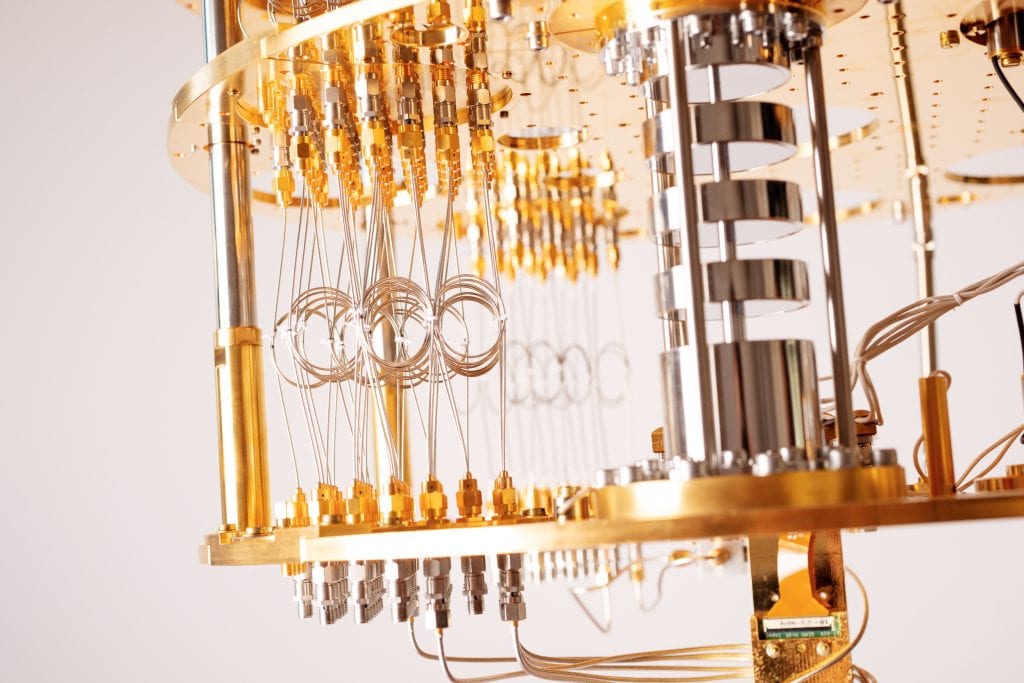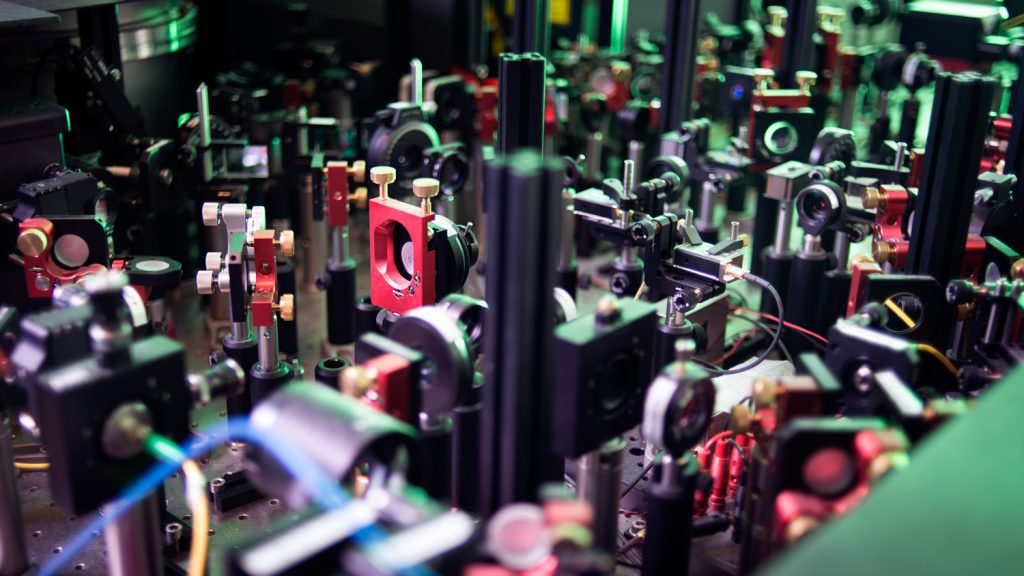Building a quantum internet
Our work focusses on design, development, assembly, characterization and testing of new hardware systems and components for the Quantum Internet, based on Nitrogen Vacancy (NV) centers in diamond. Our optics expertise is mainly applied in the Quantum Internet Division.
Working towards our goal of building a quantum internet, we design and build optical systems and setups, and we conduct proof-of-principle scientific experiments to demonstrate their key required functionalities. As a next step, we focus on further development of these optical setups into a higher-TRL optical (sub-)systems or devices, that serve as building blocks for Quantum Internet. This including systems’ optimization, characterization, integration with other (sub-)systems, and their complete performance testing as a system.
Our optical engineering expertise can be divided into three core expertise’s:
- Optical Design
We translate technical specifications of optical systems into optimal optical solutions based on free-space optical elements, fibers, photonic integrated circuits (PICs), etc. This also includes analyzing the effect of non-ideal components on the designed system’s performance (tolerance analysis). Such tolerance analysis is of prime importance for quantum optical systems, where low loss and high quantum coherence are crucial. - Applied Optical Science
We use our expertise in integrated and nano-photonics, nonlinear optics, fiber optical technologies, spectroscopy and imaging, and quantum optics, to contribute to the research, development and engineering of new hardware systems required for the realization of a quantum internet. Starting from fundamental proof-of-principle experiments we translate new scientific developments and setups into higher TRL technological solutions that are later used as key building blocks for Quantum Internet that the Quantum Internet Division is developing. - Optical Engineering
We focus on assembly, optimization/alignment, testing, and integration of complex optical setups and systems. Our up-to-date knowledge of optical and optomechanical components, tools, techniques and equipment allows us to build and test the high-performance optical systems required for building a prototype Quantum Internet. We have broad domain knowledge in other disciplines, including software development for hardware control and data analysis, which is crucial for development of user-friendly interface to high-performance optical systems.
Projects we contribute to
RE cavity
Development and characterization of a quantum memory with larger efficiency, which is based on an atomic frequency comb generated in a pigtailed impedance-matched cavity doped with rare earth ions.
VIPA – Virtually Imaged Phased Arrays for Spectrally Multiplexed Quantum Repeaters
Building, characterizing and testing a multi-channel frequency demultiplexing system for future use in a frequency-demultiplexed quantum repeater. Key applied optical experts: applied optical scientist, optical designer.
Completed project
QTelecom
We demonstrated the Quantum Frequency Conversion of single spin-entangled photons emitted by NV centers into telecommunication band (paper), and preservation of spin-photon entanglement after conversion (paper). Key applied optical experts: applied optical scientists (non-linear optics, quantum optics, fiber optics, integrated photonics), optical engineer.
Completed project
QFCS-quantum frequency conversion system
More compact, robust and user-friendly quantum frequency conversion system, using the same approach as Qtelecomsetup but with higher signal-to-noise ratio. This system is a key component in the ongoing Quantum Link demonstrator project. Key applied optical experts: applied optical scientists, optical engineer and optical systems engineer, optical designer.
Join us in creating the quantum future
Work with us as an employee or partner
Learn more
Engineering expertises
Quantum technology is among the most far-reaching and challenging technologies of our time. To address this challenge, our researchers and engineers from different divisions work closely together to optimize our research projects. Interdisciplinary collaboration is crucial for making the next steps in developing scalable prototypes of a quantum computer and an inherently safe quantum internet.



